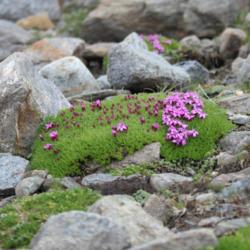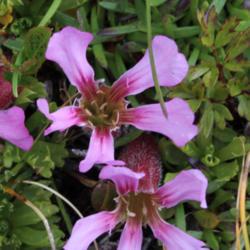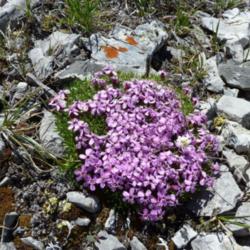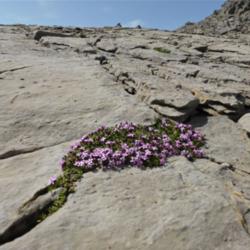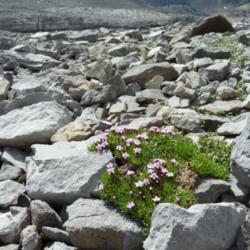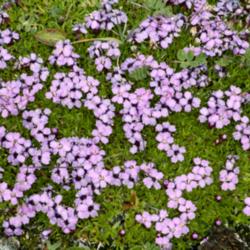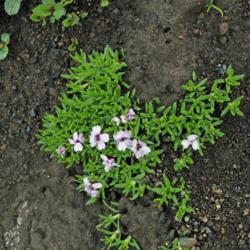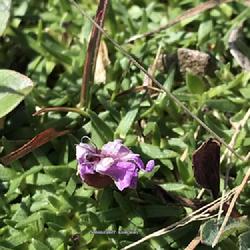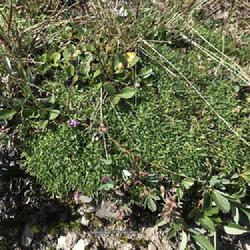"Moss campion is a low, ground-hugging plant.It may seem densely matted and moss-like. The dense cushions are up to a foot or more in diameter. The plants are usually about 2" tall but may be as much as 6". The bright, green leaves are narrow and arise from the base of the plant. The dead leaves from the previous season persist for years, and pink flowers are borne singly on short stalks up to 1 and 1/2" long, but are usually much shorter. It usually has pink flowers and very rarely they will be white. The flowers are solitary and star-shaped. They are about 1.2 cm wide. They usually appear in June through August. The flowers are held by a calyx which makes it firm and thick. The flowers are pollinated by Lepidoptera and are hermaphrodites meaning they are both sexes.
The stems and leaves are sticky and viscid to the tough, which may discourage ants and beetles from climbing on the plant.
Alpine fellfield, on windswept rocky ridges and summits above treeline. It grows mainly in dry, gravelly localities, but also in damper places. With the cushions it produces its own, warmer climate with high temperatures inside, when the sun shines.
Common all over the high arctic and the higher mountains of Eurasia and North America, (south to the Alps, Carpathians, southern Siberia, Pyrenees, British Isles, Faroe Islands, Rocky Mountains, ). In the United States it inhabits Colorado, the Big Horn Mountains of Wyoming, the Wallowa Mountains of Oregon, the Olympics, the northern Cascades of Washington and Alaska.
The seeds should be sown early in the spring time. Put the seedlings into separate pots, and it is recommended to let them winter in the greenhouse for their first winter season. To clean them rub the capsules through a screen. It's advised to plant them in the late spring or early summer because division takes place in the spring. They should be grown in well-drained soil with full sun. The climate can be cool.
In Maine it is possibly extirpated, and in New Hampshire Silene acaulis var. exscapa is threatened.
Plants in Colorado have been estimated to reach 75 to 100 years in age, and Alaskan plants may reach 300 years. The oldest known Moss campion is 350 years old and has a diameter of two feet. The plant used to be used for children with colic. The raw root skin plants were consumed as a vegetable in Iceland and in Arctic regions.
There is no listing that moss campion is toxic but it does have saponins which are toxic. They are toxic but hard to absorb in the body. They can be broken down by thorough cooking. Its advised to not consume large amounts of this plant."
Taken from wikipedia's page at:
http://en.wikipedia.org/wiki/S...
